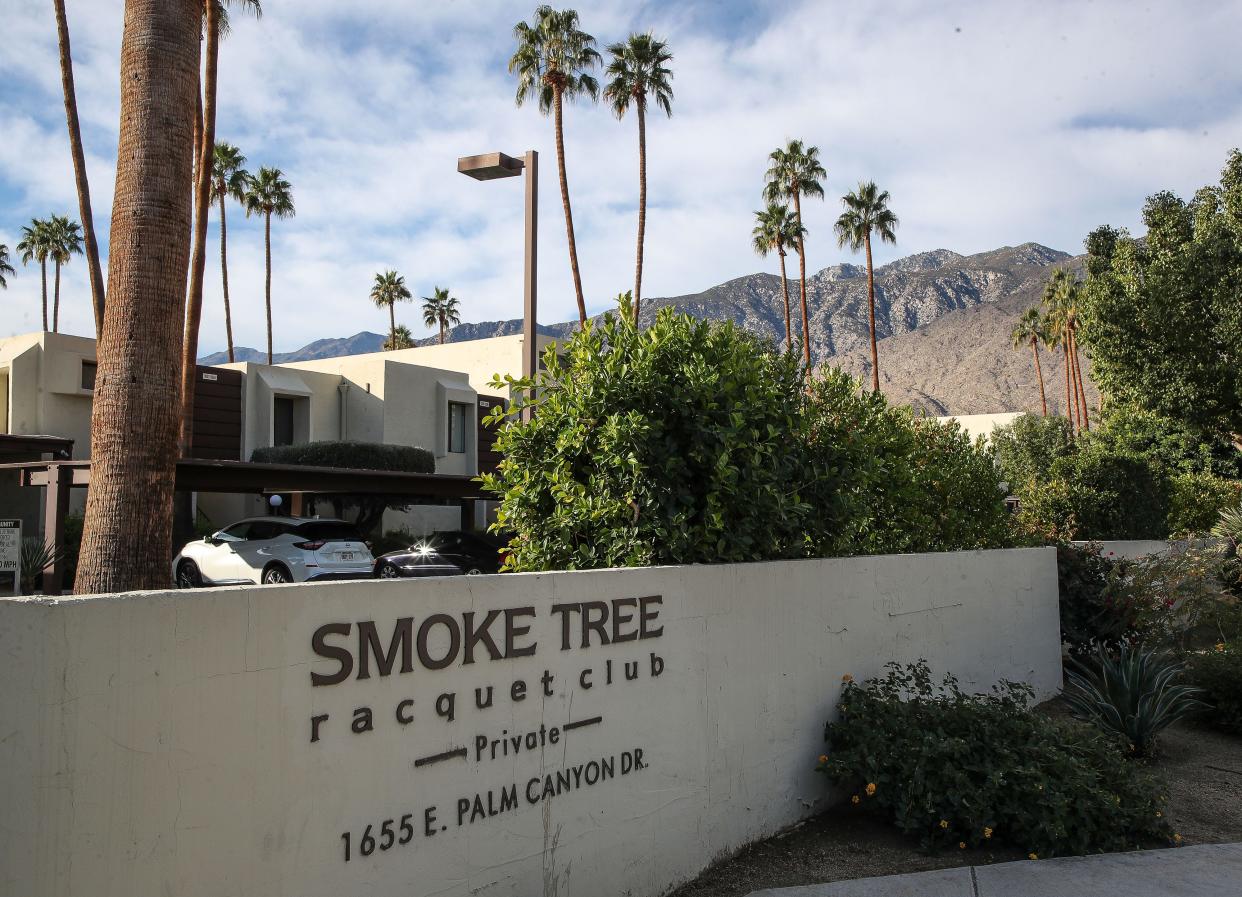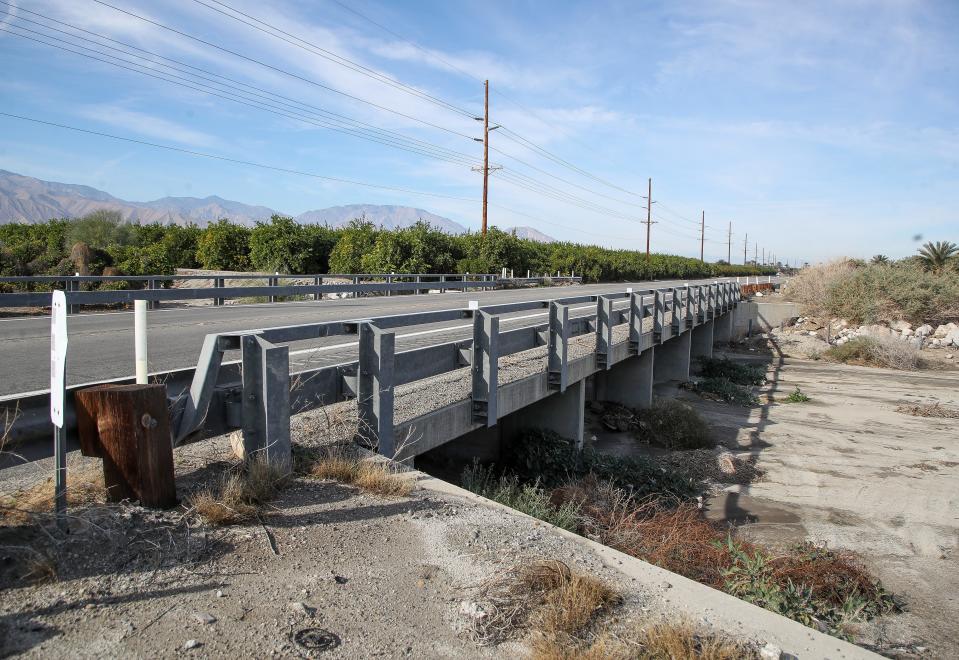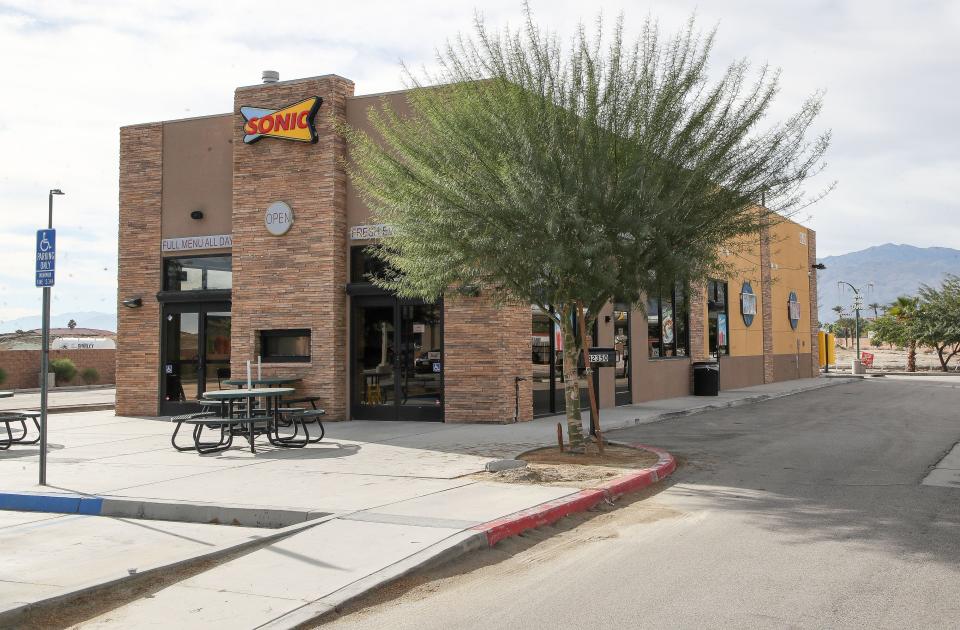Extreme heat in California: Calculating the toll of a summer heat wave in the desert

Tamra Kilminster first visited Palm Springs back in her 20s, when she traveled to the area from her home of Santa Barbara to visit her boyfriend’s family. That relationship didn’t last, but it started Kilminster’s lifelong love of the desert.
Kilminster spent most of her adult life in Palm Springs. In her 20s and 30s, she worked at downtown restaurants and stores like Billy Reed's and See’s Candy, according to her sister, Beryl Schoenfelder. As Kilminster began struggling with homelessness and addiction, her family repeatedly tried bringing her back to Santa Barbara.
“But she always wound up back in Palm Springs. She just loved the desert, she loved Palm Springs,” said Schoenfelder, who still lives in Santa Barbara.
Kilminster was found dead on July 17 in the parking lot of Smoke Tree Racquet Club, located near the intersection of Palm Canyon Way and Sunrise Drive in Palm Springs. That day the thermometer reached a high of 116 degrees, with nighttime temperatures still above 90 degrees. Kilminister’s death certificate lists acute methamphetamine intoxication as an immediate cause of death and environmental heat exposures as a contributing factor.
Kilminister was one of 10 people who died from heat exposure in the Coachella Valley between July 15 and July 29, one of the deadliest heat waves in Riverside County in recent years.
Over that two-week period, daily high temperatures exceeded 115 degrees for every day but one, peaking at a high of 120 degrees on July 21. Nighttime lows offered little relief, with temperatures in the high 80s to low 90s.
'Every heat-related death is preventable'
Kilminster, age 65, had been homeless since about 2019.
Schoenfelder tried to get in touch with her sister to get her a room in a hotel during the worst of the heat wave. But Kilminster didn’t typically have a cell phone. Schoenfelder said she’d buy cell phones for her but they’d end up lost or sold, and mainly used a P.O. box at the Palm Springs Post Office to reach her sister, which became more difficult after the post office moved locations and became less familiar for Kilminster.
Schoenfelder was in touch with one of Kilminster’s friends, who was also unhoused and had a cell phone, and he was looking for Kilminster as temperatures rose.
“We were trying to get her help, we were looking for her to get her into a hotel so she could be cooler, but we couldn’t find her,” Schoenfelder said.
A total of 14 people died from heat-related causes across Riverside County between July 15 and July 29, the most heat-related deaths recorded over a two-week period over the past five years. A two-week period in late August 2020 saw 12 deaths. Heat-related deaths are notoriously underreported, so the actual numbers are likely considerably higher.
Across the Coachella Valley, people succumbed to the heat, dying from exposure in their homes, at Freedom Park in Palm Desert, in a rental car parking lot near the Palm Springs Airport, under a roadway overpass near Oasis, and in a sand planter outside the Sonic Drive-In in Indio, maybe while seeking shade under one of the handful of newly planted trees bordering the parking lot. The oldest victim was 84; the youngest, 27. Two women in their 70s were found dead in their homes on the same day, one in Desert Hot Springs and the other in Indio, on July 20, when temperatures reached 119 degrees.

Heat illnesses and deaths often occur among older adults, farmworkers and others who work outdoors, and the unhoused population, according to Dr. Andrew Kassinove, medical director of the Emergency Department at JFK Memorial Hospital in Indio.
“One thing we’ll see (from the unhoused population) is not just deaths, but also severe dehydration and we’ll see hyperthermia temperature. They’ve been living outside in that extreme heat, and the other thing we’ll see, and it’s very sad, is we see burns from sleeping out on that hot asphalt, burns to their body,” Kassinove said.
Drugs and alcohol can also “make you less aware that you’re outside in the heat, less likely to stay hydrated, and therefore more susceptible to heat-related stuff,” Kassinove said. And anyone on medication could also experience more difficulty handling the heat.
Kassinove estimates that the hospital’s summer time daily emergency department volume has roughly doubled in the past decade he’s worked there. Temperatures have risen alongside population growth and increased tourism. When temperatures get above 110 to 115, Kassinove says the emergency department frequently sees patients come in experiencing dizziness, weakness, or other complaints “that they don’t realize is really dehydration and heat-related.”
During the July heat wave, heat-related emergency department visits in Riverside County soared to over 150 each week, an unprecedented figure: The number of reported heat-related emergency room visits has only topped 100 in three weeks over the past five years.
“Every heat-related death is preventable, it’s not something that you can’t prevent, said Wendy Hetherington, head of epidemiology and program evaluation for the county, who added that the goal is making sure that the most vulnerable populations have access to the resources they need to get out of the heat.
Extreme heat events are expected to become more frequent, intense, and longer in duration as climate change progresses, increasing the public health risks of heat illnesses and heat deaths. Cooling centers often serve as one of the main tools that localities use to prevent heat illnesses and fatalities, by providing air-conditioned spaces that are free and open to the public. Some experts and advocates say that while these cooling centers serve as an important stopgap measure, more needs to be done to protect people from the heat, especially since not everyone can drop everything and get to a cooling center during an extreme heat event.
The state released an Extreme Heat Action Plan in 2022 that outlined several recommendations, including expanding tree canopies, building codes that require new construction to include ways to reduce heat exposure, and new “community resilience centers” that would provide a refuge from extreme heat and other weather events and wildfires. But extreme heat still makes up a small fraction of the state’s climate budget, despite killing more residents than all other weather events combined, and funding for the community resilience centers was scrapped from this year’s budget, as Politico reported last year.
Preventing heat deaths is also complicated by the ways that heat intersects with other issues like homelessness and drug use, and “a good portion” of heat-related deaths in Riverside County are people who are experiencing homelessness and people who had drug use as a contributing factor in their death, according to Hetherington. The county’s public health department is currently working on starting a new climate change program that would “coordinate resources” for extreme heat and cold weather events between departments working with different vulnerable populations in the county.
Father believes his son's death was preventable
Walter Lee Woodard certainly believes his son’s heat-related death was preventable. Walter Damien Woodard died at the age of 27 from heat exposure in Indio on July 21, the day that temperatures peaked at a high of 120 degrees.
A years-long chain of events and the criminal justice system landed Woodard in the Coachella Valley during the July heat wave’s peak. Woodard had schizophrenia and bipolar disorder, according to his father, and ran away from his home in Phoenix about two years ago. He ended up in Blythe, where he spent about a year living on the streets before he was eventually arrested for setting grocery carts on fire and fighting back against the officers who arrested him.
From there, Woodard was sent to Atascadero State Hospital in San Luis Obispo County, a state-run psychiatric facility that treats patients recommended for treatment by county superior courts, including defendants that are found incompetent to stand trial by a court, like Woodard.
But in July, Riverside County brought Woodard back down to Indio to stand trial, and all charges were dropped. Woodard was free to go, but he also was in an unfamiliar city, on a day when temperatures reached 120 degrees, without his medication, according to the details his father has pieced together. He set out on foot in search of the Greyhound bus station, but got turned around, first accidentally ending up in open desert north of Interstate 10 before doubling back toward town, eventually reaching a Sonic Drive-In parking lot on Jefferson Street just below Interstate 10.

“Two days later, we heard from the Sheriff’s Department that he was found dead,” Walter Lee Woodard said. The death certificate lists “effects of heat exposure” and “environmental hyperthermia,” which occurs when the body temperature reaches extremely high levels above 103 degrees.
Woodard thinks his son’s death could have been prevented if he’d been escorted to the bus station that day after his release, something he thinks should have happened due to his son’s mental health condition.
“Any person who’s getting out and they’re not capable of taking care of themselves, or getting help to a bus stop or anything . . . I just felt that the whole thing was wrong,” said Woodard, who thinks that people like his son should get “a liaison to take them to the bus station or where they need to go,” or “all they had to do was make a phone call saying ‘Hey, your son’s getting out come and get him.’”
Heat illnesses occur on a spectrum
“If you’re outside and you’re getting overheated, the things that are happening are you’re getting dehydrated, and your body’s temperature may be heating up and that can lead to dizziness, fatigue, confusion and as it gets worse that can lead to a fever, and as things continue to get worse that can lead to the worst part of going into a coma,” Kassinove said. “So there’s a whole spectrum of things starting from, ‘I don’t feel so good, I’m a little bit tired, I’m a little bit dizzy,’ to ‘I’m in a coma, my body temperature is elevated way above normal and I could end up dying.’”
A key step in stopping someone from progressing from general fatigue and dizziness to a fatal outcome is cooling that person down quickly. When a person starts overheating, the main treatment method is relatively straightforward: cool down and rehydrate as soon as possible, by getting somewhere cool and drinking water.
In the emergency department, physicians might spray someone down with water then blow a fan on them in what’s called “evaporative cooling.” If someone’s “in really bad shape,” ice packs might be placed under their armpits or in other areas, or the patient might be dunked into cold water, according to Kassinove.
But when someone begins overheating and can’t get somewhere cooler, the heat could become fatal.
“There’s a number of reasons why you can’t fix the problem, maybe you’re not aware of the problem, you’re intoxicated or you are just not aware of the problem and then it goes too far before someone helps you. Or you’re elderly and you can’t get help, and your air conditioner is broken, that happens as well. Or maybe you’re a hiker and too far away to get help,” Kassinove said.
“(Tamra) was out there exposed to the heat and couldn’t get somewhere cooler, you probably get confused when you’re that dehydrated, or more confused, since people who are thinking clearly are not going to be outside in the elements,” Schoenfelder said. “It was just too hot.”
This article originally appeared on Palm Springs Desert Sun: Extreme heat in California: Deadly toll of summer heat wave in Palm Springs area

